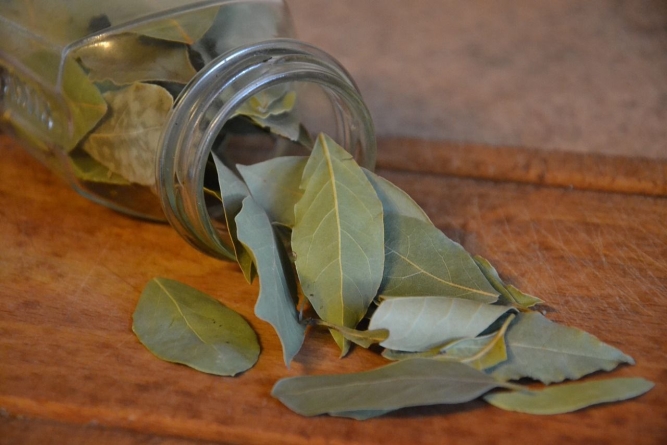
What Is Bay Leaf?
Bay leaf, also known as laurel, is a popular spice renowned for its delicate, herbal taste, commonly used to enhance the flavors of soups and meat dishes. It is predominantly available in the form of dry, whole leaves, although it can also be found as a fresh leaf or in powdered form. While cooking, bay leaf is added to infuse its essence into the dish, but it is important to remove it before serving due to its tough texture and difficulty in digestion. Despite misconceptions, bay leaves are not poisonous.
There exists a wide range of bay leaf species, all sharing similar flavor profiles and nutritional characteristics. These varieties of bay leaves can be cultivated in various regions, spanning from the Caribbean to India, and are readily accessible in spice sections of grocery stores worldwide.
Below are some notable types of bay leaves utilized for culinary purposes, along with their corresponding scientific names:
- California bay leaf (Umbellularia californica)
- Indian bay leaf (Cinnamomum tamala)
- Indonesian bay leaf (Syzygium polyanthum)
- Mexican bay leaf (Litsea glaucescens)
- West Indian bay leaf (Pimenta Racemosa)
- Turkish bay leaf (Laurus nobilis)
These diverse bay leaf variations offer unique flavors and aromas, enhancing the culinary experience across different cuisines.
Bay Leaf Benefits
It adds minimal calories to your food while boosting the amount of fiber, vitamins, minerals, and antioxidants.
Some notable health benefits of bay leaf include:
Immune system health. Bay leaf is a good source of vitamin A, vitamin B6, and vitamin C. These vitamins are all known to support a healthy immune system.
Digestive aid. Bay leaf tea can help ease bouts of upset stomach. The tea is also very aromatic, which can help relieve sinus pressure or stuffy nose.
Reduces type 2 diabetes risk factors. A pair of small studies suggested that taking ground bay leaf capsules or drinking tea brewed from Turkish bay leaf may lower your blood sugar levels. However, one of the studies was small and the other tested bay leaves on healthy volunteers, not people with diabetes.
Bay Leaf Nutrition
Bay leaf is a good source of vitamin A, vitamin C, vitamin B6, calcium, iron, and manganese.
A crumbled tablespoon of bay leaf contains:
- 5.5 calories
- Protein: 0.1 g
- Fat: 0.1 g
- Carbohydrates: 1.3 g
Bay leaves also contain small amounts of many vitamins and minerals. The most prevalent are:
- Calcium
- Copper
- Iron
- Magnesium
- Manganese
- Vitamin A
- Vitamin B6
- Vitamin C
- Riboflavin
- Zinc
Things to Watch Out For
Bay leaf can add something extra to most savory dishes, and it makes an aromatic tea. However, it should not be eaten raw or in large quantities on its own since it can be hard to chew and digest.
In addition, there have not been adequate studies on the effects of using bay leaf as a medicine during pregnancy or breastfeeding.
How to Use Bay Leaf
Bay leaf can be found in most grocery stores. Usually it comes in a dried whole leaf form. Dried powders and fresh leaves may also stock the shelves, so feel free to experiment with all three kinds in your recipes. You can also use a food processor or coffee grinder to turn your whole, dried bay leaves into a powder.
Most commonly, people cook with bay leaves by placing full, dried leaves inside a dish before cooking so that the food absorbs their flavor. But crushing them is the best way to get the full benefits of bay leaves. Blended fresh bay leaves can also be used in food, though that method is less common. Both dried, powdered bay leaf and fresh bay leaf tend to have a stronger flavor than whole, dried bay leaf, so make sure to use a bit less if subbing in for a recipe.
Here are some ways to use bay leaf in recipes:
- Add to a soup, such as Mexican posole, of beef stew during cooking for a savory, spicy flavor.
- Make some very aromatic bay leaf tea to help settle your stomach.
- Try a garam masala recipe using Indian bay leaf.
- Include in a bay leaf in marinade for beef or chicken.
- Simmer in Thai or Laotian curries.
For more information email us at jilisheafrica@gmail.com.
1 Comment